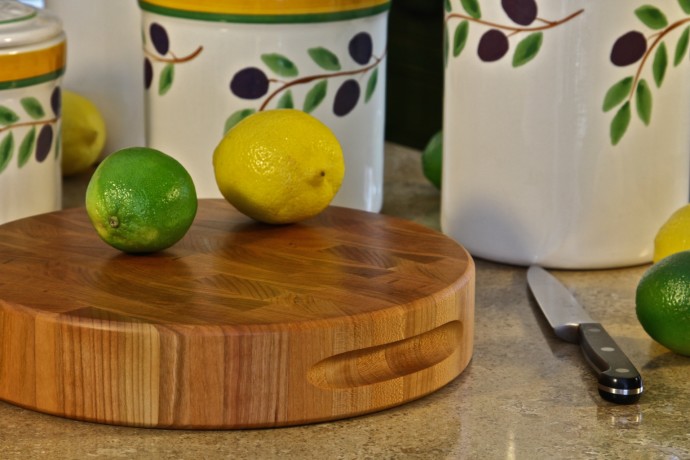Wood cutting boards can be put together in one of three ways: face-grain, edge-grain, and end-grain orientations. These terms all refer to the grain orientation relative to the cutting surface.
Face-grain boards are made up of flat-sawn or plain-sawn lumber. You can identify this cut by looking at the board’s end grain; the growth rings run essentially parallel to the board’s face. Cutting boards made with this type of lumber can be very attractive as their construction starts either with a single piece of wood or multiple pieces glued together the same as a table top or a door panel, for example, so the wood’s beautiful grain and figure patterns will be the focus.
Edge-grain boards can be constructed using flat-sawn, quarter-sawn, or rift-sawn lumber. For a flat-sawn board, for example, edge-grain boards are constructed with the “side” of the board as the cutting surface. The idea is that, for edge-grain boards, the cutting surface is perpendicular to the growth rings. This construction method results in more uniform, straight grain patterns on the cutting surface. Edge-grain boards are very durable and are attractive in the infinite stripe patterns that can be put together.
End-grain boards are oriented “vertically” with the end-grain being the main cutting surface. End grain boards can be constructed with flat-sawn, quarter-sawn and/or rift-sawn lumber. These different cuts will result in different grain patterns appearing on the cutting surface. End-grain boards (also known as butcher block) are the most durable, hide knife cuts the best, and have the least dulling effect on knives. These boards require multiple glue-up steps and are usually more expensive than other types of boards. End-grain boards are excellent for heavy-duty chopping and cutting work.
Which is best? The thickness of a cutting board is something to consider, regardless of grain construction (i.e., face-, edge- or end-grain boards). For example, a too thin board can be prone to premature warping and/or glue failure. What’s too thin? Anything much less than ¾” should raise the question. Generally, the thicker the better, but this has to be balanced against overall weight and handling ease.
So the best choice really boils down to personal preference in terms of desired appearance and wear characteristics (e.g., end-grain > edge-grain > face-grain in terms of hiding knife marks). Any type of high quality, handcrafted wood cutting board will last indefinitely depending on its care.



